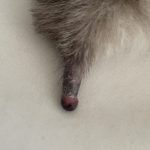Hello,
I’m sorry to hear about your pup. I spoke to two of the vets who are taking care of your dog to try to get a better idea of what kind of injured there are. This is absolutely imperative to try to formulate the cost of treatment. In some cases a broken bone can be more affordably managed by a splint or cast IF very very!!! strict cage rest is implemented for the 6-8 weeks that it takes for a bone to heal. But your pup has a brown jaw which needs to be stabilized very quickly so your dog can go back to eating normally. We don’t have weeks to see if it heals.
The degree of injury is so severe that a surgeon (an expert and not a regular surgeon like me or other vets) is needed. We have no margin of error to oaky with. UPenn had the best of the best and that’s why you are being sent there. They are not a rescue or non profit. If you don’t have the ability to pay for this (provably over $5,000) then your options are very limited. There are some pet care financial services like a credit card, care credit, go fund me , selling items, or asking friends and family. If those aren’t options I strongly recommend you look into rescues you can surrender her to so she can be treated and find a home. Otherwise there is only suffering with a very badly injured mouth where she may never be able to eat or euthanasia.
In cases like this I know it’s hard but if anyone will take her and take care of her I urge you to let her go to them.
As a personal note I will offer this. Before I went to vet school o found a puppy walking on the street in Balt Maryland. I had her for two days while I tried ti find her family. On day three she became very sick. So sick she needed to go to the er. I was 21. She came up positive for Parvo. The er bill was $200. The estimate to care for her was $3,000. Which I didn’t have. It killed me to have her put down. KILLED. so much so that I decided then and there I would never be in that position again. I went to vet school 8 years later. If anyone has offered to care for her I would have been so grateful. But no one did. Or would in those days. Sick puppies were everywhere.
I wish you the best.
If no one will take her call my clinic jarrettsville Veterinary Center. I will see if I can get a rescue to take her.
Krista.













Hello,
You can rest her. Or go to the ER. Or call your vet and ask for pain management assistance until you can be seen.
Thank you! Already asked for pain management, I was told “not without seeing her” it’s a catch 22. She’s walking, can go down steps now, very hard to walk up them, but she’s so stubborn! Making her rest, hoping it helps
Crate rest and support her hind end (if you don’t have an appropriate harness, a rolled towel works in a pinch) when going up and down stairs.
So far today, she seems to be able to move fine on a flat surface – we have NO squirrels, birds, or cats in our garden! It’s UP stairs, which she can do, but very slowly, at least she’s not screaming now.
She was talking these 5 steps in 1 or 2 leaps until now.
She is fine with the right side being touched, but not the left. She is resting, apparently almost pain free on her cushion by the TV, and seeing off seagulls on the state farm commercial.
By now you probably have an idea of her personality. She’s very opinionated, drama queen, who thinks vets and vet techs are snack food.